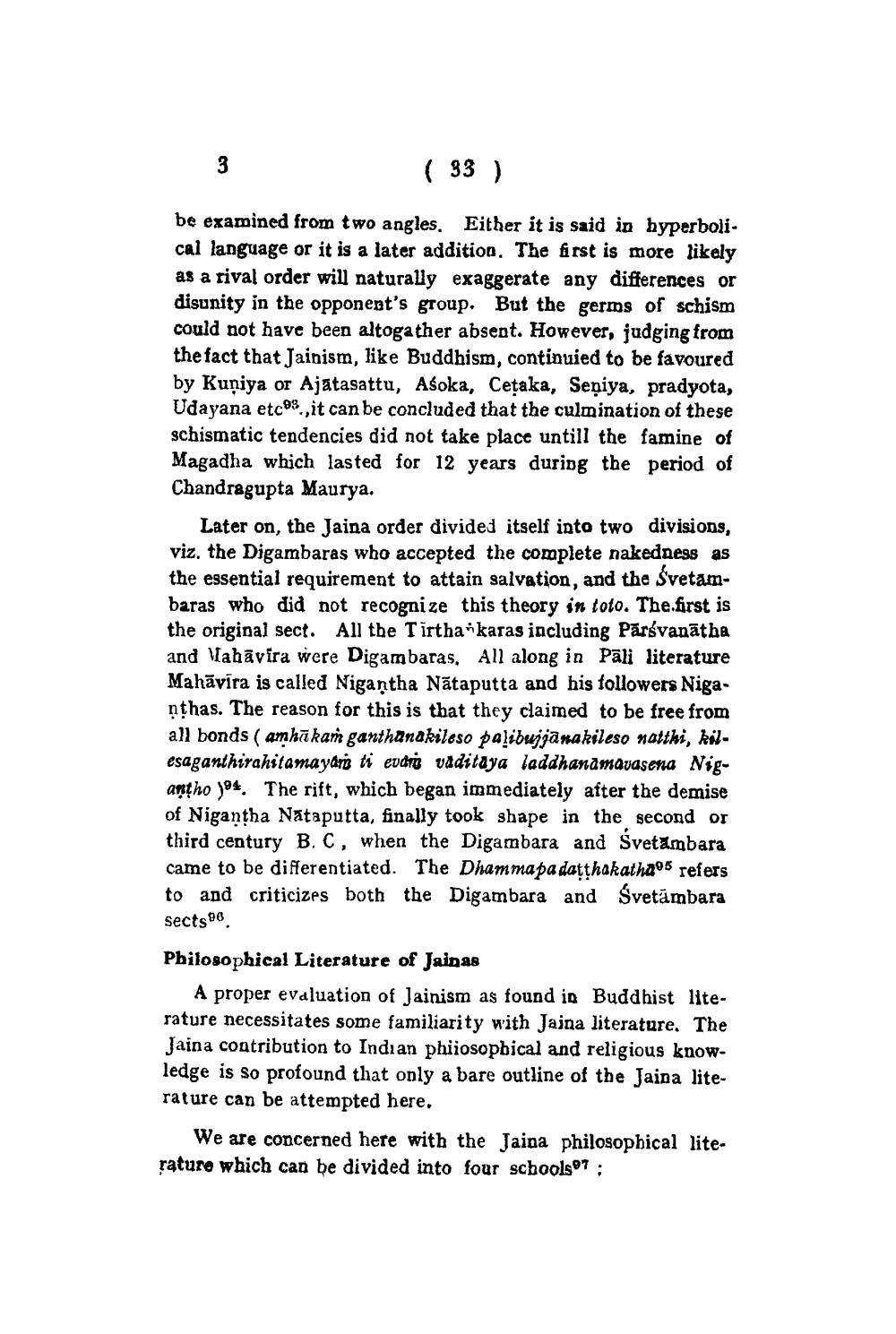________________
( 33 )
be examined from two angles. Either it is said in hyperbolical language or it is a later addition. The first is more likely as a rival order will naturally exaggerate any differences or disunity in the opponent's group. But the germs of schism could not have been altogather absent. However, judging from the fact that Jainism, like Buddhism, continuied to be favoured by Kuniya or Ajatasattu, Asoka, Cetaka, Seniya, pradyota, Udayana etc83., it can be concluded that the culmination of these schismatic tendencies did not take place untill the famine of Magadha which lasted for 12 years during the period of Chandragupta Maurya.
Later on, the Jaina order divided itself into two divisions, viz, the Digambaras who accepted the complete nakedness as the essential requirement to attain salvation, and the Svetambaras who did not recognize this theory in toto. The first is the original sect. All the Tirtha karas including Pārsvanātha and Mahavira were Digambaras, All along in Pāli literature Mahāvīra is called Nigantha Nātaputta and his followers Niganthas. The reason for this is that they claimed to be free from all bonds ( amhākam ganthanakileso palibujjanakileso nattki, kilesaganthirahitamayari ti evdrig vaditaya laddhanamavasena Nigantho 104. The rift, which began immediately after the demise of Nigantha Nataputta, finally took shape in the second or third century BC, when the Digambara and Svetambara came to be differentiated. The Dhammapa datthakathaos refers to and criticizes both the Digambara and Svetämbara sects
Philosophical Literature of Jainas
A proper evaluation of Jainism as found in Buddhist literature necessitates some familiarity with Jajna literature. The Jaina contribution to Indian philosophical and religious knowledge is so profound that only a bare outline of the Jaina literature can be attempted here.
We are concerned here with the Jaina philosophical literature which can be divided into four schools07 :




